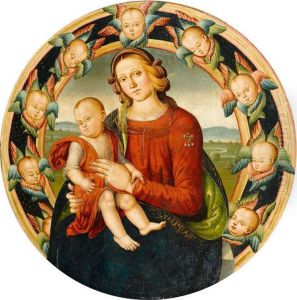Master Of Santo Spirito Paintings
The Master of Santo Spirito is an anonymous artist, designated by this notname (or conventional name) because of their work or the principal work that has been attributed to them. The name derives from an altarpiece of the Madonna Enthroned that was once in the church of Santo Spirito in Florence, Italy. The artist was active during the 15th century, a period characterized by the early developments of the Italian Renaissance. However, the exact years of the Master of Santo Spirito's birth and death remain undocumented, as is often the case with artists from this era, particularly when their identities have not been firmly established.
The lack of personal details about the Master of Santo Spirito means that our understanding of this artist comes primarily through stylistic analysis of the artworks attributed to them. Art historians have studied the altarpiece and other attributed works, noting the influence of Florentine painters of the time, such as Fra Filippo Lippi and Andrea del Castagno. The Master of Santo Spirito's work is characterized by the use of perspective and attention to human anatomy, hallmarks of the Renaissance movement, which marked a departure from the more stylized and symbolic art of the medieval period.
The adoption of the notname 'Master of Santo Spirito' is a common practice in art history for categorizing and discussing artists whose identities are either unknown or uncertain. This approach allows scholars to group together a body of work that exhibits consistent stylistic characteristics and is believed to be by the same hand. It is through this cohesive body of work that the Master of Santo Spirito contributes to our understanding of 15th-century Florentine art.
Despite the anonymity, the Master of Santo Spirito is recognized as part of the rich tapestry of artists who contributed to the burgeoning Renaissance. The works attributed to this artist are studied for their contributions to the development of Renaissance artistic principles and techniques. While personal details and a wider recognition may elude the Master of Santo Spirito, the works themselves offer valuable insights into the period's art and remain objects of admiration and scholarly interest.

